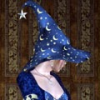is there a 'do not render back facing' polys option?
 Mistara
Posts: 38,675
Mistara
Posts: 38,675
is it hiding somewhere in DS4.6?
thanks :)
You currently have no notifications.
 Mistara
Posts: 38,675
Mistara
Posts: 38,675
is it hiding somewhere in DS4.6?
thanks :)

Licensing Agreement | Terms of Service | Privacy Policy | EULA
© 2025 Daz Productions Inc. All Rights Reserved.
Comments
From memory I don't think there is one... but this is not to say there isn't one. :)
Not using the default shaders, as I recall, but you could use it using the technique fro making a double-sided shader in Shader Mixer - just make the back face fully transparent. Of course whether that is useful will depend on why you want to do it.
What are back facing polygons?
is a trick i used to do in poser7 when using mirror reflections,
put camera behind single sided wall,
turn off back facing polys, the wall would render in the mirror, no gray in the mirror
used the trick a lot with the greenpots exotic bathroom
can't think how to do it in ds or carrara
make the backface fully transparent? interesting...
how to select the backface?
-nvm, had to re-read that lol-
For looking through a wall you can simply use uberSurface and set the Fantom property to on - that will hide it from the camera, but not from reflections. Another trick you can use is to set up a Shader Mixer shader and use the RayType brick to control what things the wall blocks and what it lets through. Or you can check the facing of the normals (by taking the dot product of the surface normal and the normalised camera vector) as I mentioned above. Using uberSurface, if it does what you need, is definitely simplest.
i stumbled on this thread in a totally different context - but while i quite understood the rest of the posts, i can't wrap my head AT ALL what you meant with this sentence (in bold). not that i'm sure it will help me with my search/issue, but..
you can do it in carrara too, there are smart (default) show and hide
Normalising the camera vector makes sure it is one unbit long, and it gives the diection of the line of sight. The normal vector is a unit-length line sticking out from the front side of the surface (it may be adjusted by a normal map or smoothing). The dot product of two vectors of equal length tells you their relationship - it's 1 if theya re parallel, 0 if they are at right-angles, and -1 if they are opposite. Taking the dot product of the surface normal and the line of sight tells you whether you are looking at the front or back of the surface.
i don't have carrara.. only poser debut (where unlike in poser, i checked, render settings for back faces can't be modified).
i remember those lines sticking out of polygons. just... no idea in which software it was. you can see those in DAZ???
No, but you don't need to - the information is available in Shader Mixer (for RSL, that is 3Delight, networks). Most modelling software will, I think, let you see the normals as a line on the polygon (those are the geometry normals - there are are also surface normals for shading which may differe from the real normals, because of smooth shading or because of a normal map, which can modulate how light affects a surface)
it's definitely me - i mentioned somewhere i'm not gifted when it gets tech.. and i've unable to concentrate for months (not it would have changed much in my level of tech savvyness). i do understand half of what was meant here, however i can't make sense of it globally, which doesn't really matter, because i think my solution isn't here either. should knoiw better than stick my nose in smart conversations. but thank you anyways for trying so hard!
i'm pretty sure now the problem/solution i've been running after (yup, still the transmitter thinghy) resides in DS' lacking the feature of switching backface rendering on/off - a shader won't change things i guess. also, while i could probably - when i'm fit - conceive or rather modify a very simple shader in the shader mixer, i opened the double-sided one... and closed it after 5 seconds, the idea being to add an image map brick to the opacity channel, but it's not me doing this, this shader is so intricated ~
never mind guys, my participation here in this thread is closed, sorry for bothering, orz